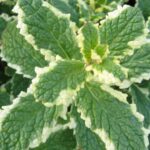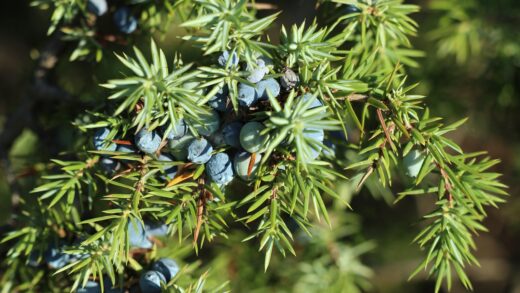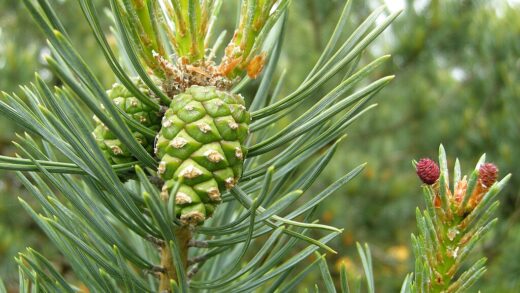Moss rose is a plant that truly embodies the principle of “less is more,” especially when it comes to nutrients and fertilization. Adapted to thrive in lean, sandy, and rocky soils, this resilient annual has very modest nutrient needs. Providing it with an overly rich environment or excessive fertilizer is a common mistake that can lead to disappointing results, favouring lush foliage over the vibrant flowers the plant is grown for. Understanding how to manage the fertility of your soil and when, or if, to provide supplemental nutrients is key to encouraging a healthy plant that is covered in a profusion of brilliant blooms all summer long.
Understanding the low-nutrient needs of moss rose
The genetic makeup of moss rose has been honed in environments where soil is often poor and infertile. As a result, the plant has evolved to be highly efficient at extracting the necessary nutrients from even the leanest of soils. It does not require a rich, heavily amended soil to perform well; in fact, it often performs best in conditions that would cause other, more demanding plants to struggle. This adaptation is a significant advantage for gardeners looking for low-maintenance options for challenging garden spots.
Introducing excessive nutrients, particularly nitrogen, can disrupt the natural growth cycle of the moss rose. Nitrogen is the primary nutrient responsible for promoting vegetative growth, such as leaves and stems. When a low-nutrient plant like moss rose is given too much nitrogen, it responds by putting all its energy into producing an abundance of green, leafy growth. This comes at the direct expense of flower production, resulting in a plant that may look large and healthy but produces very few, if any, blooms.
This preference for lean conditions means that in most average garden soils, moss rose will not require any supplemental fertilizer at all. The nutrients already present in the soil are typically more than sufficient to support its growth and flowering throughout the entire season. Before you even consider adding fertilizer, it is more important to focus on providing the other essential conditions it needs: full sun and excellent drainage. These two factors will have a far greater impact on its performance than any amount of feeding.
For gardeners accustomed to regularly feeding their other annuals and perennials, this hands-off approach can feel counterintuitive. However, it is crucial to resist the urge to treat moss rose like a heavy feeder such as a petunia or a geranium. Embracing its minimalist needs is the secret to success. By providing a soil environment that mimics its natural habitat, you allow the plant to achieve its natural balance between foliage growth and spectacular flowering.
More articles on this topic
The role of soil quality in nutrient supply
While moss rose prefers lean soil, this does not mean it should be planted in completely sterile or depleted soil. An ideal soil for moss rose is one with a balanced, albeit low, level of essential nutrients. A sandy or gravelly loam often provides a perfect medium, offering the sharp drainage the plant requires along with a modest supply of minerals to support healthy development. The focus should be on the soil’s structure and drainage first, with its nutrient content being a secondary consideration.
Incorporating a small amount of mature compost into the garden bed at planting time is one of the best ways to provide a slow, steady supply of nutrients throughout the season. Compost not only offers a wide range of micronutrients but also improves soil structure and drainage, addressing multiple needs at once. A light application, perhaps one or two inches worked into the top six inches of soil, is all that is needed. This single amendment is often sufficient to support the plant for its entire life cycle.
It is important to avoid using fresh, uncomposted manure or other “hot” nitrogen sources when preparing the soil for moss rose. These materials release nitrogen too quickly and in too high a concentration for the plant, which will almost certainly lead to the previously mentioned problem of excessive foliage and no flowers. If you use organic amendments, ensure they are well-rotted and balanced, like finished compost or leaf mould.
For container-grown moss rose, the nutrient situation is slightly different. The potting medium has a finite supply of nutrients that can be depleted over time through regular watering. However, most commercial potting mixes, especially those designed for cacti and succulents, contain a slow-release starter fertilizer that is adequate for several months. For most of the growing season, this initial charge of nutrients will be all the plant requires.
More articles on this topic
When and how to fertilize
In the vast majority of cases, fertilizing moss rose is unnecessary. If you have planted it in average garden soil or have amended the bed with a bit of compost, you should not need to provide any additional food. The best course of action is to plant it and then observe its performance. If the plant is growing steadily, has a healthy green colour, and is producing flowers, then no fertilizer is needed. Adding it would be superfluous and potentially detrimental.
There are, however, a few specific situations where a light feeding might be beneficial. If your plants are growing in extremely sterile or sandy soil with virtually no organic matter, or if they have been in the same container for a long time and the potting mix is exhausted, you might notice signs of nutrient deficiency. These can include a general yellowing of the leaves (not just from overwatering), stunted growth, and poor flowering despite adequate sunlight.
If you determine that fertilization is necessary, it must be done with a very light hand. Choose a balanced, water-soluble fertilizer, such as a 10-10-10 or 20-20-20 formula, and dilute it to at least half the strength recommended on the packaging. An even better choice would be a low-nitrogen formula, often marketed as a “bloom booster,” which has a higher middle number (phosphorus) to support flowering without encouraging excessive leaf growth.
Apply the diluted fertilizer solution to the base of the plants just once or twice during the entire growing season. A good time for the first application is after the plants have become established and are beginning to actively grow and set buds. A second application could be considered in mid-summer if the plants appear to be losing vigour. Never fertilize late in the season, as this can encourage tender new growth that will be susceptible to the first frosts.
Choosing the right type of fertilizer
When selecting a fertilizer for the rare occasions that moss rose might need one, the formulation is key. As mentioned, a balanced liquid fertilizer diluted to half-strength is a good option because it provides nutrients in a readily available form and gives you precise control over the application. However, an even more suitable choice is a low-nitrogen, high-phosphorus formula. Phosphorus is the nutrient that plays a crucial role in flower production and root development, making it more beneficial for this particular plant than nitrogen.
Slow-release granular fertilizers are another option, particularly for container plants. These products are coated with a substance that breaks down gradually over time, releasing a small, steady supply of nutrients with each watering. If you choose this method, select a formulation with a long release period (e.g., three to four months) and a low analysis (the N-P-K numbers). A single, light application mixed into the potting soil at the beginning of the season is all that would be required.
It is critical to avoid any fertilizers that are high in nitrogen. These are typically marketed as “lawn” or “foliage” fertilizers and are designed to promote rapid green growth. Using such a product on moss rose will almost certainly prevent it from flowering. Always check the N-P-K (Nitrogen-Phosphorus-Potassium) ratio on the fertilizer label. For moss rose, you want the first number (N) to be equal to or, preferably, lower than the other two numbers.
Ultimately, the best “fertilizer” for moss rose is often not a commercial product at all. Amending the soil with natural, organic materials at the start of the season provides a much more balanced and gentle source of nutrition that aligns better with the plant’s needs. Well-rotted compost, leaf mould, or a small amount of bone meal (for phosphorus) are excellent choices that support healthy, sustainable growth without overwhelming the plant with excessive nutrients.
Organic alternatives and soil amendments
For a truly sustainable and plant-friendly approach, organic amendments are the superior choice for meeting the modest nutrient needs of moss rose. Mature compost is the undisputed champion in this category. It releases nutrients slowly, improves soil structure, enhances drainage, and supports a healthy ecosystem of beneficial soil microbes. A light dressing of compost worked into the soil before planting is the ideal way to prepare a bed for moss rose, often eliminating the need for any other form of fertilization.
Another excellent organic option is worm castings (vermicompost). This material is rich in a wide array of micronutrients and beneficial enzymes, yet it is gentle enough that it will not burn the plants or cause the unwanted surge in vegetative growth associated with high-nitrogen fertilizers. You can mix a small amount of worm castings into the soil at planting time or use it as a light top-dressing for container plants mid-season to provide a gentle nutritional boost.
If you want to specifically encourage more robust flowering, a phosphorus-rich organic amendment like bone meal can be beneficial. Phosphorus is essential for bud formation and blooming. A very small quantity of bone meal can be incorporated into the soil at the bottom of the planting hole. It is a slow-release amendment, so it will provide a steady supply of phosphorus throughout the season. However, use it sparingly, as an excess of any single nutrient can disrupt the overall soil balance.
Ultimately, the goal is not to “feed” the plant directly but to create a healthy, living soil that can support the plant. By focusing on building good soil structure with organic matter, you provide an environment where moss rose can thrive naturally. This approach is more sustainable, reduces the need for chemical inputs, and results in a healthier, more resilient plant that is better equipped to produce a stunning display of flowers using the resources available in its well-prepared environment.


















